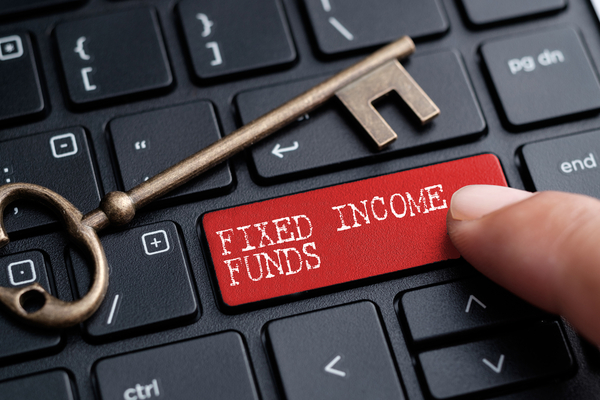The iShares 3-7 Year Treasury Bond ETF (NASDAQ:IEI) is an ETF of very safe, USD denominated treasury bonds. While credit risk isn't there, there is always duration risk. Up to now, our position has been staunchly anti-duration, where we didn't doubt for a minute that rate hikes would proceed as they have, because we basically believed the Fed would do as they say (not always the right move). We continue to avoid duration risk, but we do recognise that there is more debate as we approach higher and higher levels. There's a reason they call it a rate cycle.
Key Information for IEI
Credit risks are essentially non-existent since the only issuer of bonds for this ETF is the Treasury. The key information is the portfolio's weighted average duration, which is 5 years, and its YTM is nice to know too at 4.2%.
This YTM is consistent with what we know about the current yield curve, which right now is flat, maybe with a slight hump at the 2-year spot rate. The idea is that rates are going to be higher for a little and then gently go down a point thereafter. The market is already believing that long-term rates might be higher evidenced again by the yield curve and the fact that the 20y Treasury rate is only slightly below current rates.
Economic Prognosis
Let's begin with the impetus for last week's rally. Markets rallied on account of manufacturing data signaling a retreat of manufacturing to pre-COVID levels. The idea here was that this could indicate both a decline in supply chain pressures, or a precursor to that specifically, or more immediately that employment may be going down as some manufacturing businesses anticipate lower business due to the falling backlog. The jobs report then came and blew up the hope that unemployment may be creeping in, with employment at historic highs.
- Amazon Prime Video (Video on Demand)
- Jim Parsons, Rihanna, Steve Martin (Actors)
- Tim Johnson (Director) - Tom J. Astle (Writer) -...
- English (Playback Language)
- English (Subtitle)
- ✨【Night Lights Plug into Wall】: 0.5 watts,...
- 💕【Dusk to Dawn Sensor Night Light】:...
- 🐋【Personalized Night Light】:Takes the space...
- 🌃【Widely Used】: This plug in night light...
- 💡【Satisfied Service】If you’re ready to...
If unemployment starts, markets will expect peaking inflation or disinflation to follow, and that will likely rally all asset classes, especially long-term bonds and equities. The question for IEI investors is therefore whether or not inflation and, as a consequence interest rates, are nearing their peak.
On one hand, the employment data shows that it's not, assuming that the current inflation is substantially demand driven, or propagating through a wage price spiral. In our coverage we see a fair few points of inflation from labour across industries, but especially consulting, financials and industries that use more short-term, hourly-paid labour. Therefore, if the labour market continues to be tight, and assuming that these factors have been driving inflation, we are going to see higher rates.
However, there is another argument, and that's that consumer and now corporate spending is slowing, and we're really getting some recession on the demand side, so the current inflation was likely not too demand induced as it was, and it was mostly coming from the supply side. Key metrics that drive supply side inflation right now are energy prices, which are linked to geopolitics, but also freight, which is based on a free market. Charter rates are falling meaningfully lately, collapsing in fact back to mid-2021 levels for smaller ships at least and by about 40% for the larger TEU ships. Goods velocity seems to be falling. Moreover, we have more chips now, and markets like China will no longer have so much access to US production. In general, supply chain issues are likely to start easing, and we may even have some oversupply. This would signal peak inflation.
Remarks
- AIRTIGHT LIDS & 3 GRATER ATTACHMENTS The airtight...
- NON-SLIP SILICONE BOTTOMS The rubber on the bottom...
- NESTING BOWLS & DISHWASHER SAFE These kitchen...
- 6 SIZES BOWLS & EXTRA KITCHEN TOOLS SET The range...
- DURABLE STAINLESS STEEL The stainless steel...
- ✅FOOD GRADE SILICONE -- Made of food-grade...
- ✅NO BEND & NO BREAK & HEALTHY FOR COOKWARE --...
- ✅HIGH TEMPERATURE WITHSTAND:The Silicone Cooking...
- ✅33 DURABLE WOODEN HANDEL KITCHEN UTENSILS SET -...
- ✅BEST KITCHEN TOOLS :One- piece stainless steel...
The 5-year duration means a 5x sensitivity to changes in rates, which is quite a keen exposure. It's hard to call which way it's going to go, so we're passing on IEI, but in general we are beginning to expect inflation to top sometime quite soon. But it's still hard to know what exactly is driving current inflation in addition to energy prices, which are going to stay quite high because of real damage caused by economic disintegration, and whether the higher energy prices will propagate wage-price spiral which will depend on whether consumers think that inflation is coming from one-off energy effects. With cost of living becoming a real problem however, we'll err on the side of caution and worry about that causing a wage-price spiral.





